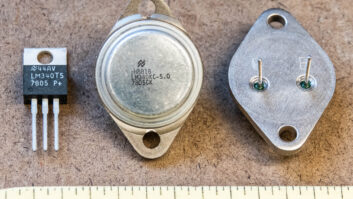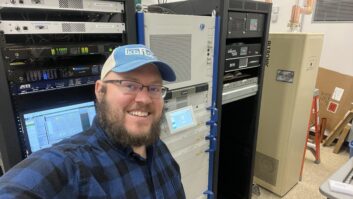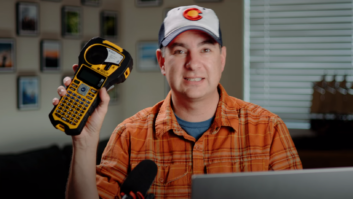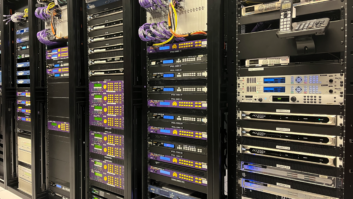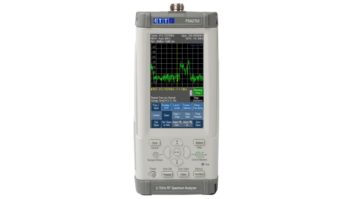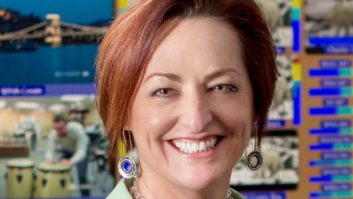When my co-workers heard that I had suddenly canceled a trip to Chicago where I’d planned to install a radio station, they assumed that I must be dead. Turns out that they were almost right.
In truth, I really wasn’t feeling well at all. And when I finally got to my GP’s office, he offered me two options:
Option #1: Go directly to the emergency room
Option #2: DO NOT IGNORE OPTION #1
Seems that although I had been sitting quietly in his office for 45 minutes before he checked my pulse, my heart was racing at 165 beats per minute. That was way too fast, and based on the history he took, he surmised that my heart probably had been beating at about that rate for a month or more, putting me squarely in the league of a man in congestive heart failure.
The good news is that any preliminary diagnosis with “heart” and “failure” in it gets you to the head of the line at the OR. And it was no time at all before the great triage team at Bryn Mawr Hospital in suburban Philadelphia had an IV delivering a cocktail of drugs that had me right back down to my good, old 68 bpm.
But it was the next morning when I got the good news/bad news: While the proper dosage of beta blocker medication could keep me at a healthy 68 bpm for a good long life, the list of potential side effects was long and scary, especially for a man anxious to avoid any drug therapy at all. And while my nurses assured me this was a great alternative — considering, well, “the alternative” — I wasn’t so sure.

A 3D cardiac map guides the surgeon by imaging each RF-administered ‘ablation’ made to the heart muscle in this cross-section of the left atrium.
Circuit design
A normal heartbeat is regulated via a complex and elegant on-board series of pacemaker cells that control the orderly chemical depolarization and repolarization of the heart muscle. The messengers are electrical impulses originated in the right atrium, which from this upper chamber are conducted via heart fibers to the lower chamber ventricles, which have their own pacing system that serves as a backup. When all is in sync, a healthy heart displays the classic waveform: a “sinus rhythm” of standard waves, segments and intervals. And the beat goes on.
But in my case, not so much. Pathways apparently were misaligned, causing these signals to interfere and create an arrhythmia, so that my heart constantly raced rather than beat at a normal rhythm and pace.
Enter the radio doctor
Dr. Sheetal Chandhok introduced himself to me as an “electrophysiologist and arrhythmia specialist” and asked if I’d consider an “ablation.”
Yes, I had to ask what that was too. Seems that over the last 15 years, a drug-free procedure had been developed and refined in which a miniature electrode is inserted into the heart via a small catheter. Once precisely in location, RF energy is used to create hundreds of tiny burns or “ablations,” isolating the misfiring cells by creating an electrically insulating barrier of scar tissue, thus stopping the transmission of the errant electrical pulses and in most cases, the arrhythmia.
He asked if I was comfortable with this high-tech “radio-wave” approach. I said, “Funny you should ask …”
“All-nighter”
Awaking the next morning in my hospital room to a wonderful, drug-free 68 bpm, I learned that I had been under full anesthesia and on the operating table for a startling 6-1/2 hours (cardiac ablation normally takes just two to three).
Seems that the first set of 150 30-second RF pulses didn’t work. That is, the tenacious misfiring heart cells in the upper chamber of my heart simply found another conductive pathway via different muscle fibers to reach and confuse the lower heart chambers. And two hours and another 150 scars later (each represented by a colored circle in the accompanying 3D image), the errant electrical signals again found a route to the ventricles, this time by circling above to find yet a third pathway to undo my normal sinus rhythm.

The author on an early morning run (again) on South Street in his native Philadelphia.
But my surgeon, too, was “tenacious” (his word). I say, he’s a hero. Instead of going home to wife and child in the wee hours of that Saturday morning and consigning me to the 5 percent of patients for whom ablation is not effective, he kept at it.
Finally, a third set of 150 RF burns around the top of the atrium did the trick and the circuit was repaired. So that next morning (and every morning since), I awoke to a normal heartbeat.
The heart of the matter
Does any of the above sound familiar? How many of us radio engineers have spent late nights chasing a ground loop or oscillation trying to return a piece of equipment to original factory specifications? And while the motivation for our hard work, dedication and tenacity may not be as laudable as saving a life, I write this article in the most profound appreciation to every practitioner in every trade who embraces this spirit of excellence and keeps their clients on the air.
For me, it’s just great to be back to full effective radiated power.
Daniel Braverman is president and founder of Radio Systems Inc. and now again enjoys easy morning runs along the Delaware River near his home in downtown Philadelphia.






